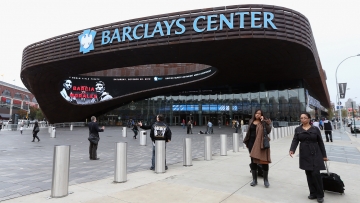Jan. 29, 2013 ? Trying to find just the right balance of time spent in meetings and time performing tasks is a tough problem for managers, but a Wayne State University researcher believes the behavior of ants may provide a useful lesson on how to do it.
Using computer simulations derived from the characteristics of ants seeking food, Kai Yang, Ph.D., professor of industrial and systems engineering in the College of Engineering, has developed a mathematical model-based methodology to estimate the optimal amount of time spent to develop a product, as well as the cost, in overlapped product development. It is the latest in a series of projects he has worked on for Siemens North America.
"Non-discrete Ant Colony Optimisation (NdACO) to Optimise the Development Cycle Time and Cost in Overlapped Product Development," published recently in the International Journal of Production Research, utilizes the concept of concurrent engineering (CE), a systematic approach to product development based on parallel execution of tasks. The approach integrates several functions to reduce the development time and cost of a product while maintaining its quality. Co-authors include Satish Tyagi, Wayne State research assistant, and Anoop Verma, Ph.D., of the University of Iowa.
In CE, cross-functional teams communicate through several meetings, some before the beginning of project, categorized as precommunication, and some during execution of the project, called communication policy.
Because significant cost is incurred through those meetings, Yang said, it is necessary to investigate the cost-time trade-offs involved in the concurrent product development process to enhance work performance. Otherwise, applying the process can result in a larger number of iterations, or rework, adding to both time and cost.
"Currently, there is a lack of communication flow within organizations due to their large size, time differences, etc.," Yang said. "Therefore, the amount of precommunication and communication policy and the extent of overlapping stages should be meticulously determined to achieve the desired goals."
As product development moves forward, lack of communication from upstream decision-makers to downstream workers can leave the latter to operate without the latest available information to complete their task efficiently, he said.
Researchers studying ants' food-foraging behavior have noticed that changes in the pheromone trails left behind by the insects communicate the best ways for those that come after them to proceed. That led to the development of ant colony optimization (ACO) models, which Yang and his team are using.
Researchers believe their simulation model could reduce product definition time by as much as 50 percent, and lead to best practices that improve critical thinking and remove communication barriers. Such practices can be applied to large-sector manufacturing, health care and service companies, Yang said.
Share this story on Facebook, Twitter, and Google:
Other social bookmarking and sharing tools:
Story Source:
The above story is reprinted from materials provided by Wayne State University - Office of the Vice President for Research.
Note: Materials may be edited for content and length. For further information, please contact the source cited above.
Journal Reference:
- S.K. Tyagi, Kai Yang, A. Verma. Non-discrete ant colony optimisation (NdACO) to optimise the development cycle time and cost in overlapped product development. International Journal of Production Research, 2013; 51 (2): 346 DOI: 10.1080/00207543.2011.633120
Note: If no author is given, the source is cited instead.
Disclaimer: Views expressed in this article do not necessarily reflect those of ScienceDaily or its staff.
Source: http://feeds.sciencedaily.com/~r/sciencedaily/~3/AkYtUmYv0G0/130129111751.htm
daytona race the cutting edge fox 8 news indy 500 angelina jolie leg daytona artie lange
 Whether it is glitches and problems vs. not wanting to teach an old dog new tricks, there are several ways to resolve issues with Windows 8.? Microsoft customers who don?t live near the undisclosed location of this store do have other options for a downgrade. HP and Lenovo offer help online for customers trying to perform downgrades themselves.? If you don?t mind paying for Windows 7 and are willing to pay $69.99, Best Buy?s Geek Squad will install Windows 7 on a Windows 8 machine at point of purchase. A complete version of Windows 7 Home Premium for $162 and Windows 7 Ultimate for a cringe-inducing $306 can be found at Amazon.com.However, at those prices, users that unhappy with a new Windows 8 machine can emulate Microsoft?s older interfaces by installing a Start Menu Replacement app.
Whether it is glitches and problems vs. not wanting to teach an old dog new tricks, there are several ways to resolve issues with Windows 8.? Microsoft customers who don?t live near the undisclosed location of this store do have other options for a downgrade. HP and Lenovo offer help online for customers trying to perform downgrades themselves.? If you don?t mind paying for Windows 7 and are willing to pay $69.99, Best Buy?s Geek Squad will install Windows 7 on a Windows 8 machine at point of purchase. A complete version of Windows 7 Home Premium for $162 and Windows 7 Ultimate for a cringe-inducing $306 can be found at Amazon.com.However, at those prices, users that unhappy with a new Windows 8 machine can emulate Microsoft?s older interfaces by installing a Start Menu Replacement app.
9(MDAzNTYzNDk2MDEyNDM5NTU1OTc1NDZmZQ001))
 Have you ever given a business presentation and thought to yourself, ?The words aren?t coming out right. ?That doesn?t sound like me. ?That?s not what I intended to say.?
Have you ever given a business presentation and thought to yourself, ?The words aren?t coming out right. ?That doesn?t sound like me. ?That?s not what I intended to say.?

